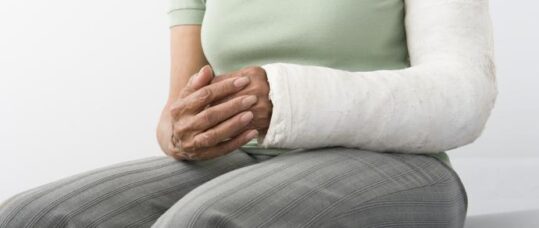Fracture rates 50% higher in Scotland and Northern Ireland

Patients suffer more fractures in Scotland and Northern Ireland and rates are higher for people in deprived areas, a study has found.
Fracture rates are 50% higher in Scotland and Northern Ireland than in London and white men and women have higher rates than Asian people.
Overall black people had the lowest rate of fractures, according to the study published in the journal Bone which looked at anonymised data for 11.3 million patients from 674 practices in the UK.
Related Article: NHS 10-year plan: What does it mean for nursing?
Women over 50 have a higher annual rate of fractures at 115 per 10,000 than men over 50, where the rate is 72 per 10,000 people a year.
White women were also nearly five times as likely to suffer fractures than black women.
The study found that men were more likely to suffer fractures in areas with socioeconomic deprivation.
Researchers from the Medical Research Council Lifecourse Epidemiology Unit at Southampton University said smoking, heavy drinking and poor diet could contribute to the regional variation in the rates of fractures across the UK.
The strongest association between deprivation and increased fracture risk was seen in hip fractures in men, the research found.
Professor Nicholas Harvey, who led the research said it “provides real support for health prevention strategies”.
Related Article: Funded nurse workforce plan needed for neighbourhood health services
He said more work is needed to understand why there are differences in fracture rates. Variations in diet, lifestyle, employment and genetic factors may all play a part, he said.
Tim Jones, commissioning adviser for the National Osteoporosis Society which funded the study, said the charity wanted to see services commissioned to national standards to help prevent fractures such as recruiting patients through an inpatients fracture clinic and putting them on a fracture pathway or through a primary care bone protection service.
The Vale of York CCG launched its innovative service for patients over 50 last year.
Jones said fracture prevention services were cost effective but had to be monitored to check they were effective.
Related Article: Over one million children living in homes causing asthma and chronic illness
Commissioners would “see the fractures come down within the second year of operation,” he said.
To read the study click here

See how our symptom tool can help you make better sense of patient presentations
Click here to search a symptom


Patients suffer more fractures in Scotland and Northern Ireland and rates are higher for people in deprived areas, a study has found



